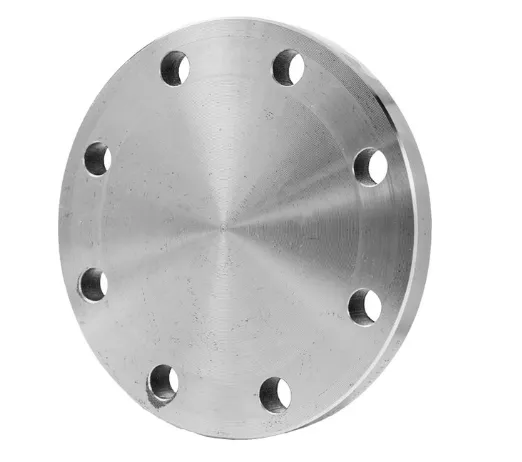-
Cangzhou Yulong Steel Co., Ltd.
-
Phone:
+86 13303177267 -
Email:
admin@ylsteelfittings.com
- English
- Arabic
- Italian
- Spanish
- Portuguese
- German
- kazakh
- Persian
- Greek
- French
- Russian
- Polish
- Thai
- Indonesian
- Vietnamese
- Zulu
- Korean
- Uzbek
- Hindi
- Serbian
- Malay
- Ukrainian
- Gujarati
- Haitian Creole
- hausa
- hawaiian
- Hebrew
- Miao
- Hungarian
- Icelandic
- igbo
- irish
- Japanese
- Javanese
- Kannada
- Khmer
- Rwandese
- Afrikaans
- Albanian
- Amharic
- Armenian
- Azerbaijani
- Basque
- Belarusian
- Bengali
- Bosnian
- Bulgarian
- Catalan
- Cebuano
- China
- China (Taiwan)
- Corsican
- Croatian
- Czech
- Danish
- Esperanto
- Estonian
- Finnish
- Frisian
- Galician
- Georgian
- Kurdish
- Kyrgyz
- Lao
- Latin
- Latvian
- Lithuanian
- Luxembourgish
- Macedonian
- Malgashi
- Malayalam
- Maltese
- Maori
- Marathi
- Mongolian
- Myanmar
- Nepali
- Norwegian
- Norwegian
- Occitan
- Pashto
- Dutch
- Punjabi
- Romanian
- Samoan
- Scottish Gaelic
- Sesotho
- Shona
- Sindhi
- Sinhala
- Slovak
- Slovenian
- Somali
- Sundanese
- Swahili
- Swedish
- Tagalog
- Tajik
- Tamil
- Tatar
- Telugu
- Turkish
- Turkmen
- Urdu
- Uighur
- Welsh
- Bantu
- Yiddish
- Yoruba

Jul . 27, 2024 08:41 Back to list
Efficient and Durable Low Pressure Slurry Pumps for Various Industrial Applications and Solutions
Understanding Low Pressure Slurry Pumps Key Features and Applications
Low pressure slurry pumps are specialized equipment designed for the efficient transport of slurry mixtures, typically consisting of a combination of water, solids, and other materials. These pumps play a crucial role in various industries, including mining, construction, and wastewater treatment, where the movement of abrasive and thick mixtures is a common requirement. In this article, we will delve into the key features, working principles, advantages, and applications of low pressure slurry pumps.
Key Features of Low Pressure Slurry Pumps
One of the foremost characteristics of low pressure slurry pumps is their robust construction. These pumps are typically made of durable materials such as high-chrome alloy or rubber linings, which provide resistance against abrasion and corrosion. The impellers and casing are designed to handle the challenging nature of slurries, ensuring longevity and reliability.
Another significant feature is their ability to handle high solids content. Unlike conventional pumps, low pressure slurry pumps can efficiently move mixtures with a high percentage of solids, making them ideal for applications involving mining tailings, dredging, and other processes that produce thick, viscous materials. The design of these pumps often incorporates wider passages and larger impeller diameters to facilitate the movement of solid particles without clogging.
Working Principles
The operation of a low pressure slurry pump is relatively straightforward. The pump typically consists of a motor that drives a rotating impeller within a volute casing. As the impeller spins, it creates a centrifugal force that moves the slurry from the suction inlet through the pump and discharges it at a designated outlet. The design of the impeller and casing is critical, as it determines the pump’s efficiency and capacity to handle varying concentrations of solids.
Low pressure slurry pumps are usually installed in a horizontal or vertical orientation, depending on space constraints and application requirements. By adjusting the speed of the motor and the configuration of the pump, operators can optimize the flow rate and pressure to meet specific operational needs.
low pressure slurry pump

Advantages of Low Pressure Slurry Pumps
The primary advantage of low pressure slurry pumps is their ability to handle challenging materials effectively. This capability reduces the risk of equipment damage and downtime, which can be costly in industrial settings. Additionally, their robust construction ensures a longer service life, translating to lower maintenance costs over time.
Moreover, these pumps are designed to operate efficiently at low pressure, which allows for reduced energy consumption compared to high pressure systems. This energy efficiency not only lowers operational costs but also enhances sustainability efforts within industries focused on reducing their carbon footprint.
Applications
Low pressure slurry pumps find a wide range of applications across various sectors. In mining operations, they are commonly used for transporting ores, tailings, and extracted materials. In the construction industry, these pumps facilitate the handling of cement slurries, dewatering processes, and the removal of slurry during excavation.
In wastewater treatment, low pressure slurry pumps are integral for the transfer of sludge, allowing for effective processing and disposal. Their versatility also extends to dredging operations, where they help in the removal and transportation of sediment from riverbeds and other water bodies.
Conclusion
Low pressure slurry pumps are indispensable tools in the efficient handling of thick and abrasive mixtures in various industrial applications. With their robust design, ability to manage high solids content, and energy-efficient operation, these pumps offer significant advantages that contribute to increased productivity and reduced costs. As industries continue to evolve, the demand for specialized equipment like low pressure slurry pumps will undoubtedly grow, cementing their position as essential components in modern manufacturing and processing environments.
Latest news
-
ANSI 150P SS304 SO FLANGE
NewsFeb.14,2025
-
ASTM A333GR6 STEEL PIPE
NewsJan.20,2025
-
ANSI B16.5 WELDING NECK FLANGE
NewsJan.15,2026
-
ANSI B16.5 SLIP-ON FLANGE
NewsApr.19,2024
-
SABS 1123 FLANGE
NewsJan.15,2025
-
DIN86044 PLATE FLANGE
NewsApr.19,2024
-
DIN2527 BLIND FLANGE
NewsApr.12,2024
-
JIS B2311 Butt-Welding Fittings LR/SR 45°/90° /180°Seamless/Weld
NewsApr.23,2024











